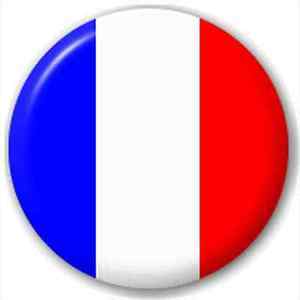
An introduction to the last 145 M.a. of Moroccan geology
During the Cretaceous, a carbonate-rich sea continued to wash over Morocco and formed limestones and marls. Seventy million years ago, towards the end of the Cretaceous, the sea gradually receded. Rocked by large earthquakes, the seabed was slowly uplifted. Forty-five million years later, Africa collided with Europe. The Straits of Gibraltar found itself in the centre of a tectonic battlefield. The rock layers of Morocco and Spain were compressed between the continents as if in a clamp. The rocks were uplifted several kilometres and the High and Middle Atlas and the Rif Mountains were born.
After the birth of the Atlas Mountains, the process of weathering and erosion began. Water, wind and temperature fluctuations began to take their effect. The resulting debris formed huge fans. Streams transported the rubble downhill in large quantities. In the mountain valleys of the High Atlas, some of the debris hardened. However, here again, the forces of nature got to work, sculpting elegant structures out of it. This is how the imposing cliffs of the Amesfrane, located in a remote part of the High Atlas, were formed.
The high pressures within the mountains have also created an impressive fracture pattern. Subsequently, nature has carved beautiful forms out of the area’s gravelly sand, including shapes like chimneys, towers and mushrooms. The end product of these destructive forces is quartz sand, trillions of grains of which are now blown about the deserts of Morocco to pile up into huge sand dunes. (www.seven-continents.com/morocco.htm - Adapted from Natural Wonders of the Maghreb by Sebastian Lüning).
In Agadir, located in the foothills of the Anti-Atlas Mountains, the hilltop kasbah (see image below) was destroyed in a 1960 earthquake, but its original old wall remains standing. It is in this small hill north of the city where you can see fantastic examples of breccias.

A Breccia is a rock composed of broken fragments of minerals or rock cemented together by a fine-grained matrix that can be similar to or different from the composition of the fragments. The word has its origins in the Italian language, in which it means either "loose gravel" or "stone made by cemented gravel". A breccia may have a variety of different origins, as indicated by the named types including sedimentary breccia, tectonic breccia, igneous breccia, impact breccia, and hydrothermal breccia.
Sedimentary breccia - is a type of clastic sedimentary rock, which is made of angular to subangular, randomly oriented clasts of other sedimentary rocks.
Fault or tectonic breccia - results from the grinding action of two fault blocks as they slide past each other. Subsequent cementation of these broken fragments may occur by means of the introduction of mineral matter in groundwater.
Igneous clastic breccia can be divided into two classes – 1. Broken, fragmental rocks associated with volcanic eruptions, both of the lava and pyroclastic type; 2. Broken, fragmental rocks produced by intrusive processes, usually associated with plutons or porphyry stocks.
Impact breccias - are thought to be diagnostic of an impact event such as an asteroid or comet striking the Earth and are normally found at impact craters. Impact breccia, a type of impactite, forms during the process of impact cratering when large meteorites or comets impact with the Earth or other rocky planets or asteroids. Breccia of this type may be present on or beneath the floor of the crater, in the rim, or in the ejecta expelled beyond the crater.
Hydrothermal breccias - usually form at shallow crustal levels (<1 km) between 150 and 350 °C, when seismic or volcanic activity causes a void to open along a fault deep underground. The void draws in hot water, and as pressure in the cavity drops, the water violently boils. In addition, the sudden opening of a cavity causes rock at the sides of the fault to destabilise and implode inwards, and the broken rock gets caught up in a churning mixture of rock, steam and boiling water. Rock fragments collide with each other and the sides of the void, and the angular fragments become more rounded.
The EarthCache:
Look at the breccia in front of you and answer the following questions:
1- Based on the types of breccias above, which do you think fits the description best? Sedimentary, tectonic, igneous, impact or hydrothermal)
2- What is the range in clast size?
The observation point is on the road! Watch out for traffic!

Une introduction à la dernière 145 M.a. de la géologie marocaine
Au cours du Crétacé, une mer riche en carbonates continuait à arroser le Maroc et formait des calcaires et des marnes. Il y a soixante-dix millions d'années, vers la fin du Crétacé, la mer a progressivement reculé. Bercé par de grands tremblements de terre, le fond marin a été lentement soulevé. Quarante-cinq millions d'années plus tard, l'Afrique est entrée en collision avec l'Europe. Le détroit de Gibraltar se trouvait au centre d'un champ de bataille tectonique. Les couches rocheuses du Maroc et de l'Espagne étaient comprimées entre les continents comme dans une pince. Les rochers ont été soulevés sur plusieurs kilomètres et le haut et le moyen Atlas et les montagnes du Rif sont nés.
Après la naissance des montagnes de l'Atlas, le processus d'érosion et d'érosion a commencé. Les fluctuations de l'eau, du vent et de la température ont commencé à produire leurs effets. Les débris qui en résultent forment d'énormes ventilateurs. Les cours d'eau ont transporté les décombres en grandes quantités. Dans les vallées montagneuses du Haut Atlas, certains des débris durcis. Cependant, là encore, les forces de la nature se mirent au travail, sculptant des structures élégantes. C'est ainsi que se formèrent les imposantes falaises de l'Amesfrane, situées dans une partie reculée du Haut Atlas.
Les hautes pressions dans les montagnes ont également créé un motif de fracture impressionnant. Par la suite, la nature a sculpté de belles formes dans le sable graveleux de la région, y compris des formes comme des cheminées, des tours et des champignons. Le produit final de ces forces destructrices est le sable de quartz, dont des milliards de grains sont maintenant soufflés dans les déserts du Maroc pour s'accumuler dans d'immenses dunes de sable. (www.seven-continents.com/morocco.htm - Adapté de Merveilles naturelles du Maghreb par Sebastian Lüning).
À Agadir, située dans les contreforts de l'Anti-Atlas, la kasbah de la colline (voir l'image ci-dessous) a été détruite lors d'un tremblement de terre en 1960, mais son ancien mur d'origine reste debout. C'est dans cette petite colline au nord de la ville que vous pouvez voir des exemples fantastiques de brèches.
Une Brèche est une roche composée de fragments brisés de minéraux ou de roches cimentées ensemble par une matrice à grain fin qui peut être similaire ou différente de la composition des fragments. Le mot a ses origines dans la langue italienne, dans laquelle il signifie soit "gravier lâche" ou "pierre faite de gravier cimenté". Une brèche peut avoir une variété d'origines différentes, comme indiqué par les types nommés, y compris la brèche sédimentaire, la brèche tectonique, la brèche ignée, la brèche d'impact et la brèche hydrothermale.
La brèche sédimentaire - est un type de roche sédimentaire clastique, qui est faite de clastes angulaires à subangulaires, orientés aléatoirement d'autres roches sédimentaires.
Faute ou brèche tectonique - résulte de l'action de broyage de deux blocs de failles qui se glissent l'un sur l'autre. La cimentation subséquente de ces fragments brisés peut se produire au moyen de l'introduction de matières minérales dans les eaux souterraines.
La brèche clastique ignée peut être divisée en deux classes: 1. Des roches fragmentées brisées associées à des éruptions volcaniques, de type laves et pyroclastiques; 2. Roches fragmentées brisées produites par des processus intrusifs, généralement associées à des plutons ou à des stocks de porphyre.
Les brèches d'impact - sont censées être le diagnostic d'un événement d'impact tel qu'un astéroïde ou une comète frappant la Terre et se trouvent normalement aux cratères d'impact. La brèche d'impact, un type d'impactite, se forme au cours du processus de cratère d'impact lorsque de grandes météorites ou des comètes entrent en collision avec la Terre ou d'autres planètes rocheuses ou astéroïdes. Des brèches de ce type peuvent être présentes sur ou sous le plancher du cratère, dans la jante ou dans les éjectas expulsés au-delà du cratère.
Les brèches hydrothermales - se forment généralement à des niveaux de croûte superficielle (<1 km) entre 150 et 350 ° C, lorsque l'activité sismique ou volcanique provoque l'ouverture d'un vide le long d'une faille en profondeur. Le vide attire l'eau chaude et, lorsque la pression dans la cavité diminue, l'eau bout violemment. De plus, l'ouverture soudaine d'une cavité provoque la déstabilisation et l'implosion de la roche sur les côtés de la faille, et la roche brisée est prise dans un mélange de roche, de vapeur et d'eau bouillante. Les fragments de roches entrent en collision les uns avec les autres et les côtés du vide, et les fragments angulaires deviennent plus arrondis.
Le EarthCache:
Regardez la brèche devant vous et répondez aux questions suivantes:
1- Sur la base des types de brèches ci-dessus, quelle est selon vous celle qui correspond le mieux à la description? Sédimentaire, tectonique, ignée, impact ou hydrothermal)
2- Quelle est la gamme de taille de clast?
Le point d'observation est sur la route! Attention à la circulation!

 The most exciting way to learn about the Earth and its processes is to get into the outdoors and experience it first-hand. Visiting an Earthcache is a great outdoor activity the whole family can enjoy. An Earthcache is a special place that people can visit to learn about a unique geoscience feature or aspect of our Earth. Earthcaches include a set of educational notes and the details about where to find the location (latitude and longitude). Visitors to Earthcaches can see how our planet has been shaped by geological processes, how we manage the resources and how scientists gather evidence to learn about the Earth. To find out more click HERE.
The most exciting way to learn about the Earth and its processes is to get into the outdoors and experience it first-hand. Visiting an Earthcache is a great outdoor activity the whole family can enjoy. An Earthcache is a special place that people can visit to learn about a unique geoscience feature or aspect of our Earth. Earthcaches include a set of educational notes and the details about where to find the location (latitude and longitude). Visitors to Earthcaches can see how our planet has been shaped by geological processes, how we manage the resources and how scientists gather evidence to learn about the Earth. To find out more click HERE.